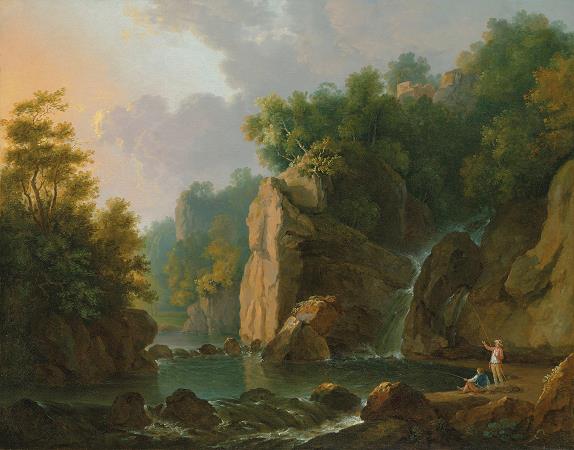River Dargle. The River Dargle rises in the Wicklow Mountains of Ireland on the southern slopes of Tonduff 642 metres, and flows down the Glensoulan hanging valley, to fall over the 121 metres Powerscourt Waterfall. The Dargle then flows through the Glencree valley where it is fed by the River Glencree, before flowing east for a further 13 km where a small tributary the Swan River joins opposite the People's Park, Little Bray. The Dargle then flows for a final 1 km to reach the Irish Sea at Bray Harbour. In August 1401 the O'Byrne clan of County Wicklow, who periodically raided Dublin, encamped a large mercenary army, composed mainly of their relatives, the O'Meagher clan, on the banks of the Dargle near Bray. The authorities in Dublin received advance warning of the intended raid from the Walsh family of Carrickmines, whose lands stood directly in the path of the mercenary army. Led by John Drake, who was three times Lord Mayor of Dublin, the citizens of Dublin supported by the Walsh clan, scored a decisive victory, commemorated as the Battle of Bloody Bank, over the O'Byrnes and O'Meaghers on the banks of the Dargle. The slaughter was so terrible that the area became known as Bloody Bank until it was renamed in the nineteenth century as Sunny Bank. The outcome greatly improved the security of Dublin, and seriously weakened the power of the O'Byrne clan. Sir Walter Scott visited the area in 1825 and mistakenly assumed that Dargle was the name for any glen, etc. He used the word in his novel Redgauntlet seven years later: Glen, nor dargle, nor mountain, nor cave, could hide the puir hill-folk. About 1838 the eminent judge Philip Cecil Crampton, who lived at St. Valery House, by the Dargle, became a supporter of the temperance movement: to show his fidelity to the cause, he emptied the entire contents of his wine cellar into the river. The folk song Waxies' Dargle makes an indirect reference to the river. Non-religious holidays in Dublin-especially tradesmens' days off-were traditionally referred to as a Dargle Days. The Waxie's Dargle, on the other hand, is a humorous reference to the annual outing of the Dublin shoe-makers and repairers to Irishtown on the River Dodder.
more...


